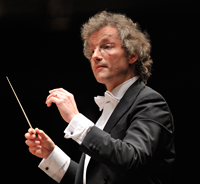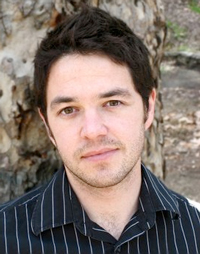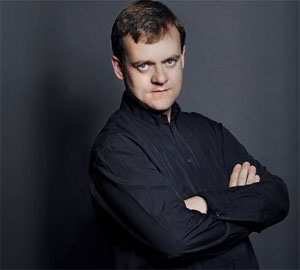by Daniel Hathaway

In February, Daniel R. Lewis Young Composer Fellow Sean Shepherd completed his impressions of three Yosemite National Park scenes captured by American photographer Ansel Adams, the final commission of Shepherd’s two-year residency with the orchestra. The composer is quick to point out that the piece is not a musical representation of the Adams images but “a kind of response to that set of three black-and-white photographs… a meditation on and celebration of both the place and the images” — exactly what the French Impressionists had in mind a century ago.

Water Over Rock began subtly with flute, harp, piccolo and soft percussion, then violin, woodwind and horn solos were succeeded by a section solo for the violas and a chattery climax, ending with an oboe solo. Winter Sunrise commenced with a chilly snare drum and a gradual crescendo from the percussion, then quacking brass and a series of calculated, highly rhythmic events separated by bars of silence. Merced Lake Country was introduced by rich textures in the strings layered with brass outbursts and horn calls, then, after a bleak, calm section, to a denouement with violin solo and solo strings, piano staccatos and percussion pings.
Tuolumne made a very positive impression on first hearing. That copyright issues precluded printing the photographs in the program book or projecting them turned out to be a good thing, since the piece is really about what musical impressions those images created in Sean Shepherd’s mind and ear — and that proved to be fascinating. The composer was on hand to enjoy a warm ovation from the audience.

The remarkable Passacaglia, scored at the outset for basses, horns, timpani and English horn (paired with tuba) ended with a long, intense, ruminative violin cadenza so physical that Zimmerman’s foot stamps seemed part of the score. That bridge led to a mallet-crazy Burlesque featuring an impossible duet between solo violin and clarinet (Daniel McKelway). During the course of the movement, Zimmermann, when he wasn’t otherwise really busy, stood back and beamed at what his orchestral colleagues were up to.
The Cleveland Orchestra, Welser-Möst and Zimmermann were all of one mind throughout this clever, zany piece and the audience ovation was tremendous.
The concert might have ended there on a very strong note, but a joyous reading of Dvorak’s rarely-played sixth symphony was still to come. The gracious and engaging work — inspired by Brahms but so different (so Dvorak!) — got off to a smiling start with lovely woodwind duets and advanced to an expressive adagio with fine flute and horn solos. The ebullient Furiant was overdecked by excellent piccolo work (Mary Kay Fink) and Welser-Möst and the orchestra fanned the flames of the finale into a thrilling final Presto. So this concert, so brilliantly played, had two equally plausible conclusions. Should it have ended with the Shostakovich instead? Maybe, but it would have been a remarkable evening at Severance Hall either way.
Published on ClevelandClassical.com April 22, 2013
Click here for a printable version of this article.
Return to the website.



